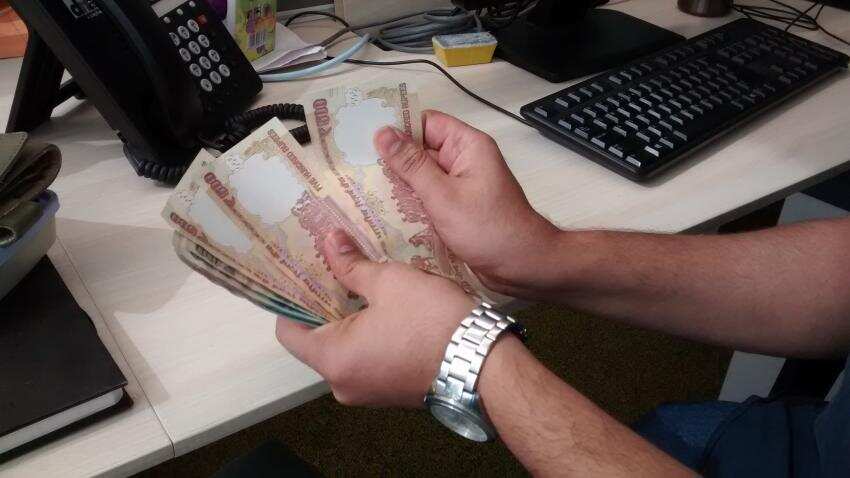Mining, construction, power, textile holds 55% of India’s bad debt: Ind-Ra

India’s bad debt is concentrated in four sectors - iron and steel, construction and infrastructure, power and textile which hold 55% of the total Rs 11.8 trillion debt, a report by India Ratings agency stated.
This implies that out of the 240 companies analysed, hair-cuts needed to arrive at sustainable debt levels for these sectors ranges at 40%-70%, Ind-Ra analysts Soumyajit Niyogi, Priyanka Poddar, Rakesh Valecha, Siddharth Goel, Arijeet Maji and Sandeep Singh stated in a report dated July 19.
In their earlier report on ‘Risking finance’ Ind-Ra pointed out how 240 out of the 500 corporate borrowers held Rs 11.8 trillion debt in FY 17.
The metals and mining sector (iron and steel) and infrastructure and construction hold 20% of the total debt each. While power and textile hold 13% and 5% of the total debt respectively.
India Ratings attributed most of the stressed loans to stretched balance sheets and viability assessments.
“ARCs have been modestly successful in bad debt resolution in the current paradigm wherein banks have been averse to significant hair-cuts on debt sales,” the report stated.
Security Receipts (SRs) were outstanding at Rs 600 billion backed by Non-Performing Assets (NPAs) close to Rs 1000 billion as on March 31, Ind-Ra report stated.
In February 2016, RBI reported 29 stated owned banks that wrote off a total of Rs 1.14 lakh crore of bad debts between financial years 2013 and 2015.
Indian Express in their February 9 edition named SBI (Rs 40,084 crore) and PNB (Rs 9,531 crore) as ‘the most generous’ in writing off bad debts in the last three financial years.
The four sectors named earlier, under the most likely scenario of an EBITDA margin of 10%-12% (FY15 and FY16: 8%-10%), continued operation as a going concern may provide better realisations, the report added.
However, in the event of an incremental stress wherein margins reduce to 6%-7.5%, liquidation could be the only solution.
Solving the bad debt problem
Bad debt in Indian banks would require asset reconstruction companies(ARCs) to re-orient themselves if they are to facilitate the resolution process as they currently have a 15% mandatory investment rule and capital constraints.
“Current capital position of ARCs can at most take care of 10% of the bad debt in the Indian banking system. Additionally, a debt-led strategy for investing in security receipts (SRs), leading to a debt/equity ratio of more than 2 times, could create liquidity issues for ARCs and may not be in tandem with the long gestation period for recovery in India,” the report stated.
1. Bringing in third party investors:
Third party investors should invest in Security Receipts (SRs) which will replace banks investing in SRs backed by their own distressed debt.
“Third-party investors – along with ARCs – could invest in at least 80% of the issued SRs,” the report stated.
2. Allow ARCs to invest in less than 15% if non-bank investors invest 80% of SRs:
This will incentivise ARCs to create a new model for debt resolution and assist them in meeting the capital constraints they currently face
3. Allow banks to amortise loss on sale for a full exit:
Amortization of losses on sale over a period of 2-3 years should be done to avoid misalignment of interests between banks and asset reconstruction companies (ARCs), the existence of an unsustainable level of debt delaying the restructuring of companies and banks having to subsist with the problem in their investment books, the report added.
Ind-Ra however supports the current framework of ARCs only for cases that target recovery basis liquidation.
The benefit of the prevailing model is that it allows banks to capture the contingent upside and, in some cases, support provisioning norms by investing in SRs.
However, this model has a number of issues such as misalignment of interests between banks and ARCs, the existence of an unsustainable level of debt delaying the restructuring of companies and banks having to subsist with the problem in their investment books.
The adoption of the ‘Insolvency and Bankruptcy Code, 2016’ in India is likely to streamline debt resolution, the report added.
Get Latest Business News, Stock Market Updates and Videos; Check your tax outgo through Income Tax Calculator and save money through our Personal Finance coverage. Check Business Breaking News Live on Zee Business Twitter and Facebook. Subscribe on YouTube.
RECOMMENDED STORIES

Small SIP, Big Impact: Rs 1,111 monthly SIP for 40 years, Rs 11,111 for 20 years or Rs 22,222 for 10 years, which do you think works best?

SBI 444-day FD vs PNB 400-day FD: Here's what general and senior citizens will get in maturity on Rs 3.5 lakh and 7 lakh investments in special FDs?

SCSS vs FD: Which guaranteed return scheme will give you more quarterly income on Rs 20,00,000 investment?

Rs 3,500 Monthly SIP for 35 years vs Rs 35,000 Monthly SIP for 16 Years: Which can give you higher corpus in long term? See calculations
11:02 AM IST










 Corporate debt continues to be a cause of concern
Corporate debt continues to be a cause of concern India's foreign debt climbs by $10 billion, at $486 billion
India's foreign debt climbs by $10 billion, at $486 billion Undisclosed income of over Rs 22,000 crore unearthed over past 2 years
Undisclosed income of over Rs 22,000 crore unearthed over past 2 years NPAs ratio in public sector banks up 9% in FY16
NPAs ratio in public sector banks up 9% in FY16  Banks can recover loan dues from debtor's savings account: Madras High Court
Banks can recover loan dues from debtor's savings account: Madras High Court